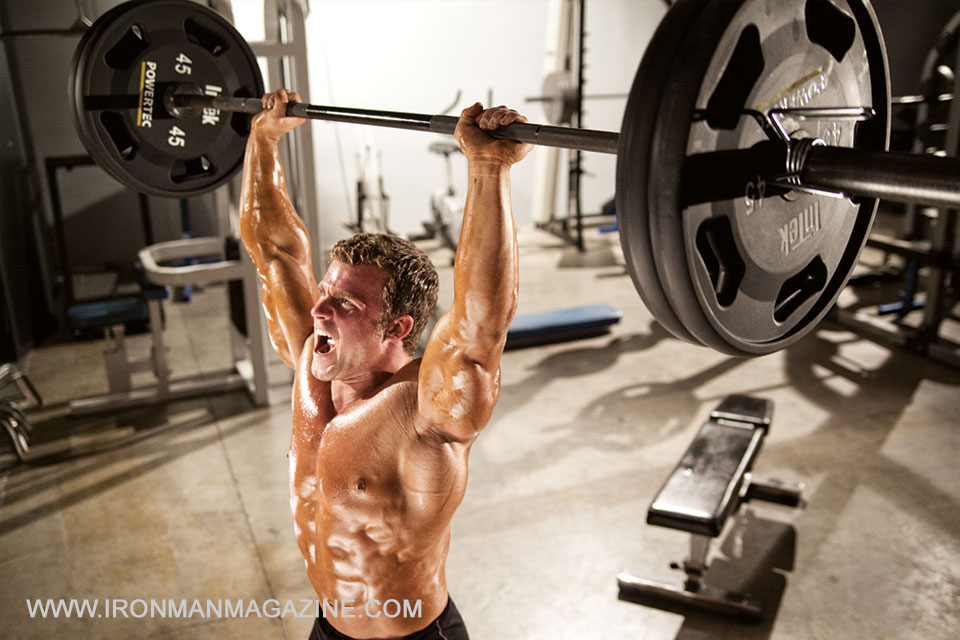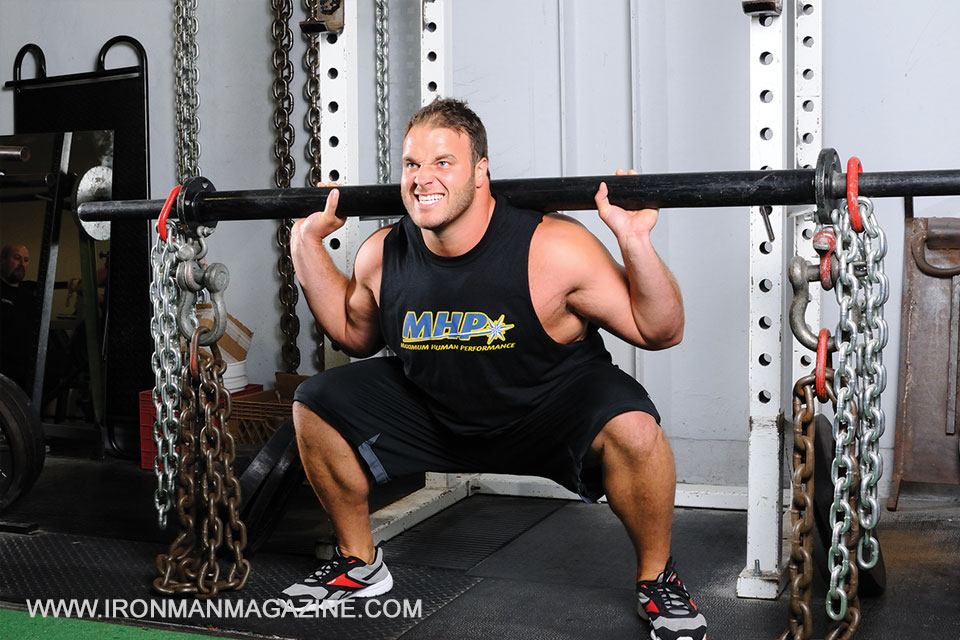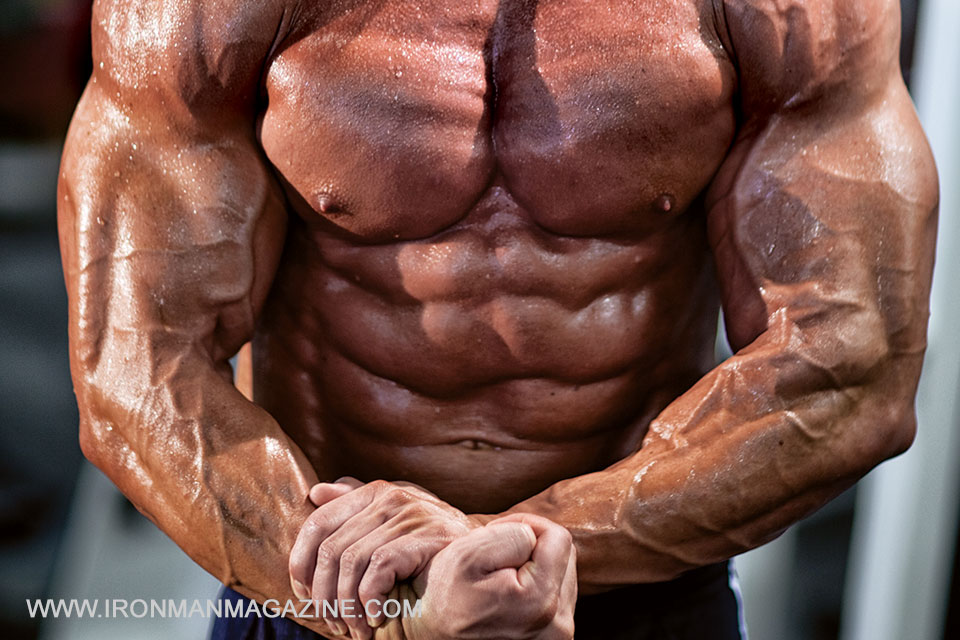


When I first got interested in getting bigger and stronger, my influences were Steve Stanko and John Grimek. I met them and watched them train at the original York Gym on Broad Street. I also greatly admired the awesome physiques of Jack Dellinger, Bill Pearl and Steve Reeves. What attracted me the most were their wide, muscular shoulders. They simply exuded power, and I firmly believed that strength was equally as important as shape in a physique.
Part of the reason that all the old-time bodybuilding champions displayed such amazing shoulder development was that they did overhead presses. Before the Weider brothers took control of physique competition from the AAU, bodybuilders were awarded athletic points at major contests. Since they were going to compete after a weightlifting meet anyway, they simply took part in the contests and did the three Olympic lifts: the press, snatch and clean and jerk.
So they had to train hard on the press, and as a result they ended up with cannonball deltoids, which greatly enhanced their physiques and helped them place higher in contests. Then three things happened about the same time that changed the way bodybuilders and strength athletes trained. First, the Weiders gained domination over physique competition and eliminated the athletic points. Second, the sport of Olympic lifting dropped the press, and, lastly, powerlifting emerged as an AAU sport. So almost overnight the overhead press practically disappeared from weight rooms, except when it was done as an auxiliary movement.
Wide, powerful shoulders were no longer the main focus of bodybuilders. Now it was big chests and arms. That attitude also carried over into strength training, but it’s a mistake. Strong deltoids play a major role in every athletic activity, and they help protect the rather delicate shoulder joints and prevent them from being injured during falls and violent collisions.
The two best deltoid exercises, in my opinion, are overhead presses and weighted dips—followed by incline and flat-bench presses. By pressing bars or dumbbells at different angles and including weighted dips, you strengthen the three heads of the deltoid—the front, lateral and rear heads. Front and lateral raises done with dumbbells are also good for increasing size and strength in the shoulders.
What I’m going to do here, however, is present some exercises that hit the deltoids in a slightly different manner. The change usually stimulates a nice surge in strength.
I’ll start with dumbbell cleans. “But that’s a pulling movement,” you may be thinking. Bear with me. They are prerequisites for the next exercise I’m recommending. Also, dumbbell cleans help build stronger deltoids on their own. When you clean a bar, momentum allows you to rack it across your shoulders, but dumbbells force the muscles and attachments to control the line of pull and turn the weights over to fix them on the shoulders. That forces the delts to work harder. Harder is good.
Use straps on these so you can handle more weight. Strap onto the dumbbells, stand up, and hold the dumbbells on the outsides of your thighs. Now bend your knees and lower the weights to just above your knees, and then pull the dumbbells up and rack them on your shoulders. Make sure that all of your muscles are very tight before you commence the clean, and make sure your upper body remains absolutely erect.
Lower the dumbbells carefully, and then do the next rep. Do these in sets of five reps, and keep using heavier weights until you’ve found your limit. Then do a couple more work sets with that poundage. Once you have mastered the technique of hang cleaning the dumbbells, you’re ready for an even better deltoid movement—dumbbell presses. You will be able to handle more weight while standing, so that’s what I recommend. No straps, however, as they get in the way.
Clean the weight strongly, either from the hang or from the floor. Then tighten every muscle in your body and grip the floor with your feet. Everyone quickly discovers that pressing dumbbells is very different from pressing a barbell. You have to control the dumbbells from the very beginning to lockout and not let them run forward, backward or to either side. That’s exactly why they’re so beneficial. Your weaker arm will reveal itself right away, but over time and with lots of reps, it will catch up with the stronger arm—which will have direct carryover value to every upper-body and back exercise.
Until you get the form down perfectly, you need to do dumbbell presses in a deliberate, more-slow-than-fast fashion. If you attempt to explode the dumbbells off of your shoulders, they will invariably run out of the correct line quickly. This is a pure power movement, unlike any other for the shoulders. Being able to clean and press 100-pound dumbbells was proof positive that athletes were extremely strong in the upper body. It still is. I like to vary the sets and reps on these—five sets of five, six sets of three and, after warmups, doubles or singles to max.
When you finish each set, be sure to lower the dumbbells with care. Ease them from your shoulders down to the floor. Never let them crash down. That can be very stressful to your elbows and shoulders.
Another way to jolt your delts is an exercise I learned about in the training hall at the ’68 Olympics. I was watching Kaarlo Kangasniemi, the great 198-pounder from Finland, doing hang snatches, and he was pressing the bar out for the final four or five inches. Pressing out a snatch is cause for disqualification, so I asked him why he was doing it. He replied, “Make shoulders strong.” Ah! Now I understood. Later on I tried a few myself and found out how right he was.
Use straps and start the bar from the hang, using a wide or snatch grip. Dip as you did for the dumbbell cleans, and pull the bar up over your head—but not all the way to lockout. With your knees locked, press the bar those final few inches, and then lower it back to your thighs and do another rep. On your final rep hold the bar overhead for a six-to-eight-second count. That will cause your delts to scream for relief. Do five or six sets.
Finally, one of my favorite deltoid movements—Bradford presses. I’m glad to see other writers recommending this exercise because it is one of the very best. I got to meet the legendary weightlifting champion Jim Bradford in York, but it was John Grimek who taught me how to do the exercise that was named after Jim. John said he had used it throughout his career in bodybuilding and Olympic lifting.
Fix the bar across your front delts just as you would to press it. Push press the weight to just over the top of your head and hold it in that position for five or six seconds, then lower the bar to the back of your head and rest it on your traps. Take a breath or two, then push press it back up to the same spot directly over your head and hold it for another five or six count. Lower the bar to your front delts, and get ready for the next rep. Over and back counts as one rep. Do all your breathing while the bar is at rest. You must hold your breath while you’re resisting the weight when it’s over your head, or you will not be able to apply your full effort.
This exercise is effective because it has a built-in motivational device. It’s amazing how much harder you can push up against the weight when it’s perched directly over your skull. Five sets of five is usually enough, and increase the weight on each set.
Make sure your shoulders are thoroughly warmed up before you do these. Also, once you drive the bar to above your head, lock your legs and tighten every muscle in your body so you can apply maximum pressure up into the bar.
All of these exercises will help you build bigger, stronger shoulders, and as the saying goes, “Shoulders make the man.”
Editor’s note: Bill Starr was a strength and conditioning coach at Johns Hopkins University from 1989 to 2000. He’s the author of The Strongest Shall Survive—Strength Training for Football, which is available for $20 plus shipping from Home Gym Warehouse. Call (800) 447-0008, or visit www.Home-Gym.com. IM






















You must be logged in to post a comment Login